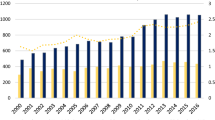Abstract
National Crime Survey (NCS) data yield an estimate that 171,000 Americans were nonfatally shot in criminal assaults, robberies, and rapes for the period 1973–1979. Comparing this estimate with the number of firearms homicides during this period suggests either that the death rate in gunshot cases is very high (over 1/3) or that the NCS estimate is low. Based on police-generated data appropriate to estimating the true death rate from gunshot wounds, it appears that the NCS estimate is low by a factor of about 3.0 compared with the number of criminal gunshot woundings known to the police. It is common knowledge that survey-based estimates of assault rates tend to be relatively unreliable, a fact that has been attributed to problems with respondents being willing and able to recall threats, fist fights, and other minor assaults. The current result indicates that the estimation problem is not limited to minor assaults. There is reason to think that the underestimate of gunshot woundings is the result of problems with the NCS sample as well as problems with respondent cooperation.
Similar content being viewed by others
References
Block, C. R., and Block, R. L. (1984). Crime definition, crime measurement, and victim surveys.J. Soc. Issues 40(1): 137–160.
Block, R. L. (1977).Violent Crime, D. C. Heath, Lexington, Mass.
Block, R. L., and Block, C. R. (1980). Decisions and data: The transformation of robbery incidents into official robbery statistics.J. Crim. Law and Criminol. 71(4): 622–636.
Martin, E. (1981). A twist on the Heisenberg Principle-or how crime affects its measurement.Soc. Indicat. Res. 9: 197–223.
Parsons, C. W. (ed.) (1972).America's Uncounted People, National Academy of Sciences, Washington, D.C.
Penick, B. K. E., and Owens, M. E. B., III (eds.) (1976).Surveying Crime, National Academy of Sciences, Washington, D.C.
Pierce, G., and Bowers, W. (1979).The Impact of the Massachusetts Gun Law on Gun and Non-Gun Related Crime, Unpublished manuscript, Northeastern University, Boston.
Singer, S. I. (1981). Homogeneous victim-offender populations: A review and some research implications. InVictims of Crime: A Review of Research Issues and Methods, National Institute of Justice, Washington, D.C, pp. 75–86.
Skogan, W. G. (1976). Citizen reporting of crime: Some national panel data.Criminology 13(4): 535–549.
Skogan, W. G. (1981).Issues in the Measurement of Victimization, U.S. Department of Justice, Bureau of Justice Statistics, Washington, D.C.
Sparks, R. F. (1981). Surveys of victimization-an optimistic assessment. In Tonry, M., and Morris, N. (eds.),Crime and Justice: An Annual Review of Research, Vol. 3, University of Chicago Press, Chicago, pp. 1–60.
Wolfgang, M. E., Figlio, R., and Sellin, T. (1972).Delinquency in a Birth Cohort, University of Chicago Press, Chicago.
Zimring, F. E. (1972). The medium is the message: Firearm calibre as a determinant of death from assault.J. Leg. Stud. 1(1): 97–124.
Author information
Authors and Affiliations
Rights and permissions
About this article
Cite this article
Cook, P.J. The case of the missing victims: Gunshot woundings in the National Crime Survey. J Quant Criminol 1, 91–102 (1985). https://doi.org/10.1007/BF01065250
Issue Date:
DOI: https://doi.org/10.1007/BF01065250




